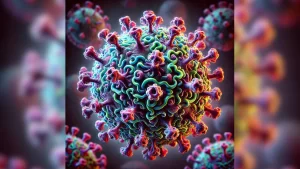
- Upper extremity vascular disease is relatively uncommon compared to lower extremity vascular disease, says Cardiologist Dr. Ravi Gupta
- Don’t Ignore bluish discoloration in your arms
A team led by Dr. Ravi Gupta, Cardiologist at the Wockhardt Hospital Mumbai Central successfully treated a 65-year-old Mr. Shantilal Jain for upper limb artery blockage in the right arm.
Mr. Shantilal Jain with diabetes, on kidney dialysis, post-bypass with multiple health problems comes with a complaint of bluish discoloration in right arm at Wockhardt Hospital Mumbai Central. Doctors at Wockhardt Hospital diagnosed problem through colour doppler followed by angiography. There are 2 arteries which supply blood to the hand. Out of this one (Radial Artery) was already used for AV fistula and draining all the blood in the fistula itself so not supplied in the hand (steal Phenomena). Another ulnar artery had 100% long lasting very calcified blockage. So, there was no blood flow to the right hand. As left radial artery was used for bypass so no option for another AV fistula
Arm artery disease is a circulatory disorder where arteries in the arm are blocked or narrowed, unable to carry oxygen-rich blood into the arms. It is caused due to several factors such as high blood cholesterol sedentary lifestyle, diabetes, high BP tobacco and much more. As the disease develops one may experience bluish discoloration skin. These symptoms are caused by the narrowed arteries inability to supply the necessary oxygen to the muscles. This condition can lead to increased risk of amputation, heart attack, and stroke
Dr. Ravi Gupta, Cardiologist, Wockhardt Hospital, Mumbai Central, says, “We used hard wires and balloon to open an artery so blood flow started in the palm. In this procedure it was important to save not only limb but also AV Fistula which is necessary for his regular dialysis.”
“Peripheral artery disease in your arm implies decreased blood flow to the arm due to a blocked artery. This can result in arm fatigue, pain, and weakness, particularly with use. PAD is most commonly associated with the legs and feet, although it does include conditions caused by the blockage of blood flow in the blood vessels of both the arms and hands. Doctors call this form of PAD “upper extremity PAD.” It is much less common than PAD of the legs and feet, estimated to affect about 10 percent of the population. ” Adds Dr. Gupta
Mr Shantilal Jain patient says, “Numbness and discoloration were the major concern for me and my family. We are thankful to Dr for saving my hands and giving me timely treatment.”





